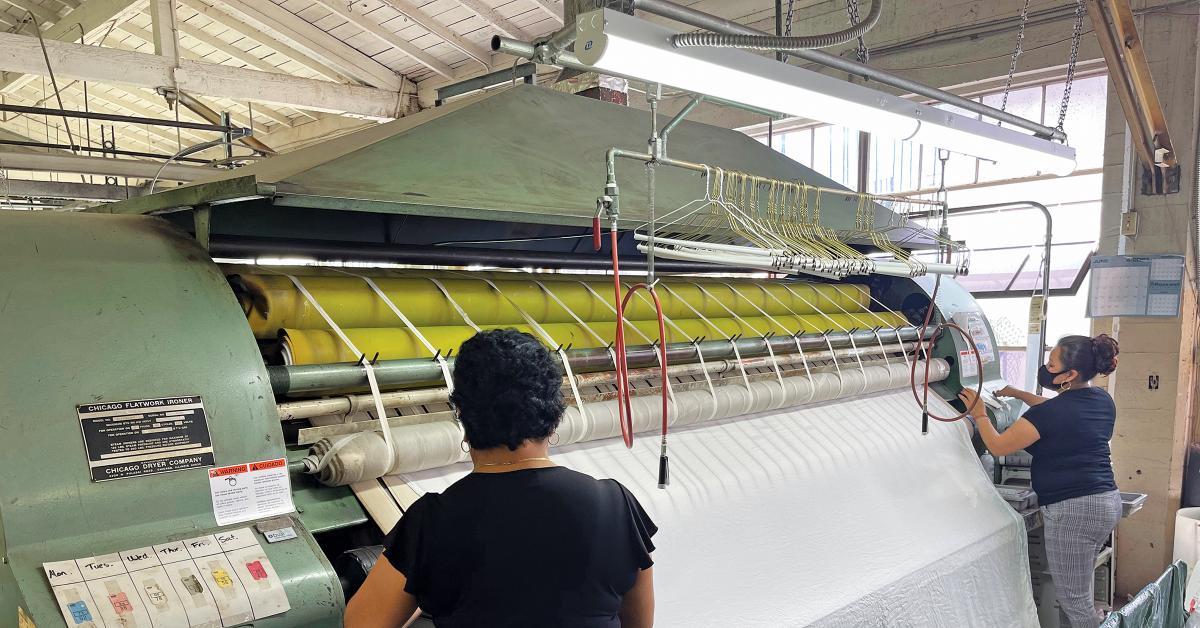CHICAGO — A lot of skill and expertise goes into cleaning garments, removing stains and refreshing the fabric. Just as important, however, are the finishing touches at the end of the process. Without skilled and attentive pressers and buck operators, the final product just doesn’t look finished and the customer probably won’t be satisfied.
To explore the importance of this critical process, American Drycleaner reached out to four industry professionals to get their views — Carlyn Parker, director of operations at Dependable Cleaners in Boston; David Grippi, chief operating officer of Clean Franchise Brands; Sasha Ablitt, owner of Ablitt’s Fine Cleaners in Santa Barbara, California; and Jim Desjardins, president of Daisy Cleaners in Salem, New Hampshire.
We wanted to learn how these dry cleaners approached pressing, buck operation and the finishing process in general, both from the day-to-day work and from a philosophical perspective.
Q: Describe the function of ironing and buck operations as it relates to the entire cleaning process. How important is it to the finished product?
Ablitt: That’s an interesting question because if you have a lot of stains on your clothes, people are not going to be happy. But finishing is kind of like the icing on the cake — without it, you really don’t have a product. I would say it’s equally important as the actual cleaning function. If your product doesn’t look good on the way out the door, you’re not going to have a return customer.
Desjardins: Well, I think that it’s as important as cleaning the garment. If you don’t give me back something that’s pressed correctly, then why bother doing the job?
Parker: We feel that stain removal and pressing are the two keys for success with our clients. If you can take all the stains out, but if you don’t press it well, they still look wrinkled. You can press it well, but if you don’t take all the stains out, the garments still look a mess because they have a stain on their garment. These are the two biggest things we do every day to get people to look their best.
Q: How has the process changed since you first started in the drycleaning business?
Grippi: I think technology has really changed in the business. New detergents have special retexturing agents that help in the finishing process, and the way the clothes are cleaned and processed today is very different. Clothes cleaned in hydrocarbon or GreenEarth are a lot softer and easier to finish, versus the day when things were cleaned in perc. They came out very hard, rough and staticky.
Parker: Technology really hasn’t changed efficiency. It’s changed quality. For instance, now you have pants toppers that have a clamp at the bottom of the leg. It helps to steam out the pants better, so they press easier. The quality of shirts coming off the buck is better than it ever was previously.
Ablitt: The technology has gotten much better, from the auto baggers to the automated assembly and even the presses. The easiest presses now are the bucks for the shirts — because of all the technology and the programs, you can pretty much train anyone on them at this point. So that’s wonderful. It does make it a little more challenging, though, when things go wrong; it’s a lot harder to replace a computer board.
Q: How does ironing and other finishing processes change for non-clothing items? Has this process changed in recent years?
Parker: We’ve pivoted to finishing a lot of linen tablecloths. We used to send those out, but we now are doing them in-house. We had to get new pressing equipment that we didn’t have before. We had gotten it right before the pandemic started, so it was helpful that we already had it in place. We were already headed in that direction.
Ablitt: I was blessed with an old Chicago ironer. It’s huge — about 10 feet across. They don’t make them that large anymore, and it’s built like a Mack Truck. The thing just runs and runs. We’ve rebuilt the bearings several times, and it just keeps going. It’s completely mechanical and has such a large-diameter drum; nobody in town can match the quality of my sheets.
The way we mark in the sheets and assemble them has changed, but that finishing piece has stayed exactly the same because that press provides me with such tremendous quality. While other technology has gone forward quite a bit, the way we press the sheets has stayed the same. I researched different ways, taking into account energy savings and gas savings, but the trade-off doesn’t seem worth it.
Join us Tuesday for Part 2 of this series, where we’ll look at the examination and training processes our professionals use to make their customers look their best.
Have a question or comment? E-mail our editor Dave Davis at [email protected].

